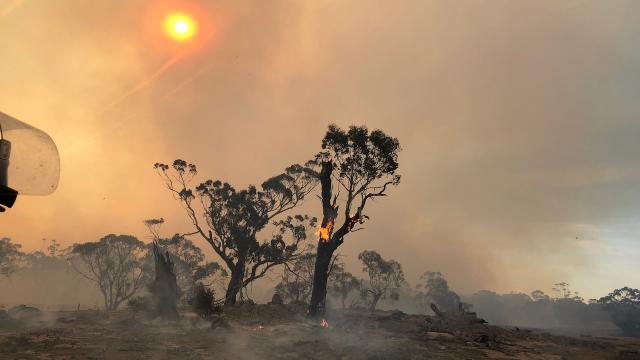According to CSIRO, climate change has driven a significant increase in Australia’s forest fire activity over the last three decades. It’s news that comes as no surprise to many but is still devastating to hear.
The claim was made in research CSIRO had published over the weekend in the Nature Communications journal.
As we approach another Summer, the 2019-2020 Black Summer is still fresh in our minds. Many of us spent weeks overwhelmed by severe heat and the inescapable thick orange sky, kilometres away from the fires themselves. It was the nation’s hottest and driest summer ever recorded and resulted in bushfires that burned over 59 million acres, killed 34 people, billions of animals and damaged thousands of homes and buildings.
CSIRO’s climate change research takes us right back to the fires, and the devastation.
The research was the result of analysing 32 years of satellite data and 90 years of ground-based datasets from climate and weather observations. Also included in its research was simulated fuel loads for Australian forests. CSIRO said all of this info combined to form the basis of the research, which allowed researchers to identify climate change driven increases versus natural variability.
CSIRO also identified ‘fire season’ was getting longer – stretching towards Autumn and Winter. It also said there was an increase in fire activity in cooler and warmer regions including alpine forests in Tasmania and tropical rainforests in Queensland. Areas usually safe from fire.
According to CSIRO scientist Dr Pep Canadell, the research was one of the most extensive studies of its kind performed to date. Canadell said it was important for understanding how continued changes to the climate might impact future fire activity.
“While all eight drivers of fire-activity played varying roles in influencing forest fires, climate was the overwhelming factor driving fire-activity,” Canadell said. “The results also suggest the frequency of forest megafires are likely to continue under future projected climate change.”
It’s heartbreaking news.
While we know fires plague Australian Summers every year, some worse than others, CSIRO made a number of devastating observations. Over the last 90 years, three of the four mega fire years occurred after the year 2000. (A mega fire year is defined as the cumulative burned area of forest over one year of more than 1 million hectares).
Australia’s mean temperature has increased by 1.4 degrees Celsius since 1910, CSIRO said. And with a rapid increase in extreme heat events, rainfall has simultaneously declined in the southern and eastern regions of the continent.
CSIRO said globally, fire activity is decreasing, however, the extent of forest fires in Australia is increasing.
In its research, CSIRO compared fire activity in 1988-2002 with that in 2002-2018. One notable comparison was that the average annual forest burned area in Australia increased 350 per cent. That rose to 800 per cent when including 2019.
Further, CSIRO said there was a five-fold increase in annual average burned area in Winter and a three-fold increase in Autumn, with Spring and Summer seeing a ten-fold increase.
Canadell said understanding these trends will help to inform emergency management, health, infrastructure, natural resource management and conservation moving forward.
